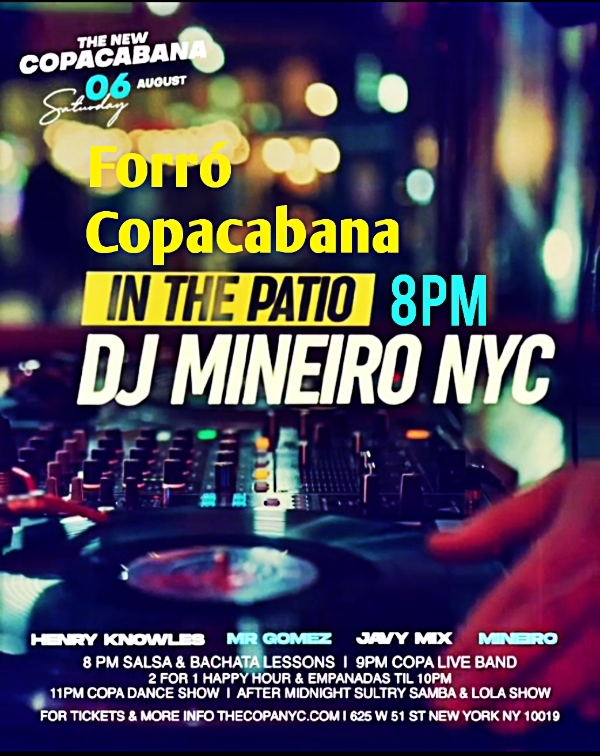What is forró?
Forró is a popular dance originating in North Eastern Brazil. Forró is also the name of the music which accompanies this dance and it is used to describe the dance and the music. Forró's music has themes linked to the cultural and daily aspects of life in northeast region of Brazil. The primary musical instruments of Forró are the triangle, accordion and zabumba.
History of Forró
According to researchers, Forró emerged in the nineteenth century when the dance floors were of beaten clay; therefore, it was necessary to wet them before dancing so the dust did not rise. People danced shuffling their feet to keep dust from rising.
Name origin
The origin of the name Forró has several versions, but the most accepted is that of folklorist and popular culture researcher, Luiz Câmara Cascudo. According to him, the word forró derives from the abbreviation of forrobodó, which means confusion, or farra, which means carousal. Both of these words were used to describe the footwork of the dance currently called Forró.
Characteristics
One of the main characteristics of Forró is the act of dragging the feet during the dance. Couples, performing the dance with their bodies very close, transmit a mysterious sensuality. Although it began in Northeastern Brazil, Forró spread throughout Brazil with great speed and success. Northeastern migrants seeking work brought Forró to the southeastern parts of Brazil in the 1960s and 1970s. Currently there are several genres of Forró: electronic forró, traditional forró, university forró and forró pé de serra (old style forró).
Main Forró Influence
Luiz Gonzaga do Nascimento, Sr., "The King of Baião" or "Gonzagão, December 13, 1912 – August 2, 1989 was a Brazilian singer, songwriter, musician and poet and one of the most influential figures of Brazilian popular music in the twentieth century. He has been credited for having presented the rich universe of Northeastern musical genres to all of Brazil, having created the musical genre baião, the rhythm of forró and has been called a "revolutionary" by Antônio Carlos Jobim. According to Caetano Veloso, he was the first significant cultural icon with mass appeal in Brazil. Luiz Gonzaga received the Shell prize for Brazilian Popular Music in 1984 and was only the fourth artist to receive this prize after Pixinguinha, Antônio Carlos Jobim and Dorival Caymmi. Gonzaga's son, Luiz Gonzaga do Nascimento Jr, known as Gonzaguinha (1945–1991), was also a noted Brazilian singer and composer who composed the famous forró song, Acacia Amerela (Yellow Acacia).
Forró's Day
Forró Day is celebrated on December 13, the National Day of Forró. The date is a tribute to the birthday of the greatest accordionist that Brazil has known - Luiz Gonzaga. It was instituted by Law No. 11,176, sanctioned by the President of the Republic, Luiz Inácio Lula da Silva, on September 6, 2005, which originated in Bill 4265/2001, authored by federal deputy Luiza Erundina. On December 13, 2012, Brazil celebrated the centenary of Luiz Gonzaga. Brazilian music owes much to the creative ability of this talented artist and to his silver accordion, "of the people", as he had once called the instrument.
Festas Juninas
Juninas festivals are national cultural events celebrated in June in schools all over Brazil in recognition of St. John’s Day, June 24. Students wear traditional agrarian costumes and dance the quadrilha, a form of forro danced as a group.
The five best Juninas Party in Northeastern Brazil
